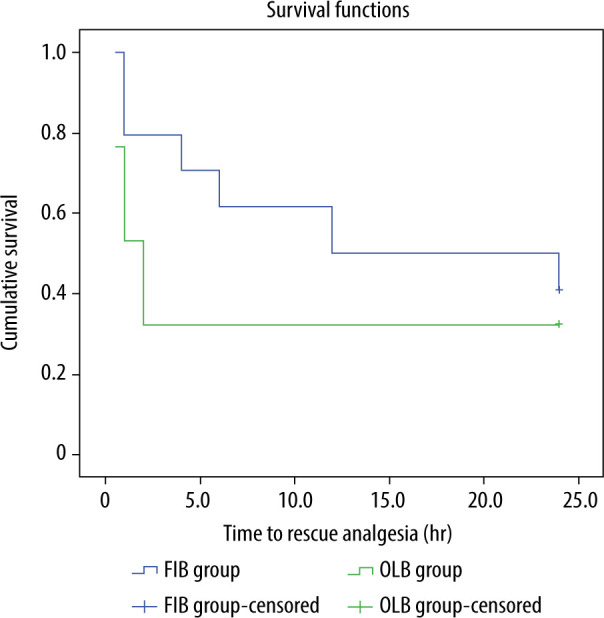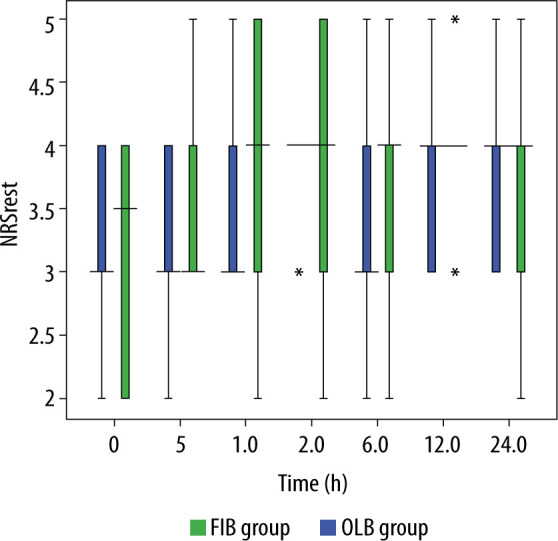Ultrasound-guided fascia iliaca block versus quadratus lumborum block for perioperative analgesia in patients undergoing hip surgery. A randomised controlled trial.
IF 1.6
Q2 ANESTHESIOLOGY
引用次数: 1
Abstract
Background Femoral neck fractures are common orthopaedic fractures, especially in old age, and they represent a life-threatening condition requiring surgical intervention. In this study, we aimed to compare 2 regional techniques used to decrease perioperative pain. Methods In this parallel group randomized controlled clinical trial we enrolled 68 patients from both sexes scheduled for hip surgery after femoral neck fractures. The patients were randomly allocated to 2 equal groups with one receiving ultrasound- guided supra-inguinal fascia iliaca block (FIB) and the other receiving ultrasound- guided anterior quadratus lumborum block (QLB). Our primary outcome was the duration of postoperative analgesia. The secondary outcome was measuring the Visual Analog Scale (VAS) during patient positioning while applying the neuraxial block, the total analgesic requirement in the postoperative period, patient satisfaction in the postoperative period, and the frequency of adverse effects. Results The group receiving supra-inguinal FIB had a significantly longer time of postoperative analgesia 18 (4–24), compared to the group receiving anterior QLB 2 (1–24), P = 0.005. They consumed less morphine throughout 24 hours postoperatively, 5.3 ± 0.9 mg compared to 6.9 ± 1.87 mg (95% CI: 6.45–3.92, P = 0.008), and they showed less pain during positioning for spinal anaesthesia. Conclusions Supra-inguinal FIB provides prolonged postoperative analgesia compared to anterior QLB in patients undergoing hip surgery. It was associated with less pain during positioning in spinal anaesthesia and decreased total morphine consumption.



超声引导髂筋膜阻滞与腰方肌阻滞用于髋关节手术患者围手术期镇痛。一项随机对照试验。
引言:股骨颈骨折是常见的骨科骨折,尤其是在老年人中,它们是一种需要手术干预的危及生命的疾病。在这项研究中,我们旨在比较两种用于减少围手术期疼痛的区域技术。材料和方法:在这项平行组随机对照临床试验中,我们招募了68名男女患者,计划在股骨颈骨折后进行髋关节手术。患者被随机分为两组,一组接受超声引导的腹股沟上髂筋膜阻滞(FIB),另一组接受超声波引导的腰方前肌阻滞(QLB)。我们的主要结果是术后镇痛的持续时间。次要结果是在应用神经轴阻滞的患者定位过程中测量视觉模拟量表(VAS)、术后总镇痛需求、术后患者满意度和不良反应频率。结果:腹股沟上FIB组术后镇痛时间18(4-24)明显长于QLB2前组(1-24),P=0.005。术后24小时内,他们消耗的吗啡较少,分别为5.3±0.9 mg和6.9±1.87 mg(95%可信区间:6.45-3.92,P=0.008),并且在脊柱麻醉定位期间疼痛较少。结论:在髋关节手术患者中,腹股沟上FIB与前QLB相比可延长术后镇痛时间。它与脊柱麻醉中定位时疼痛减轻和吗啡总消耗减少有关。
本文章由计算机程序翻译,如有差异,请以英文原文为准。
求助全文
约1分钟内获得全文
求助全文
来源期刊

Anaesthesiology intensive therapy
ANESTHESIOLOGY-
CiteScore
3.00
自引率
5.90%
发文量
48
审稿时长
25 weeks
 求助内容:
求助内容: 应助结果提醒方式:
应助结果提醒方式:


